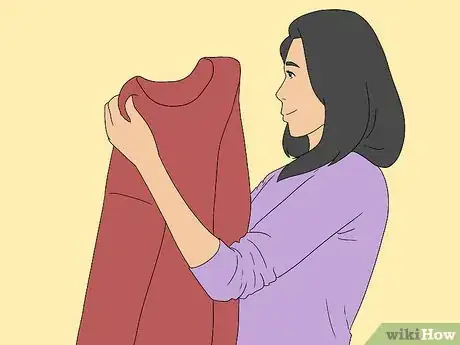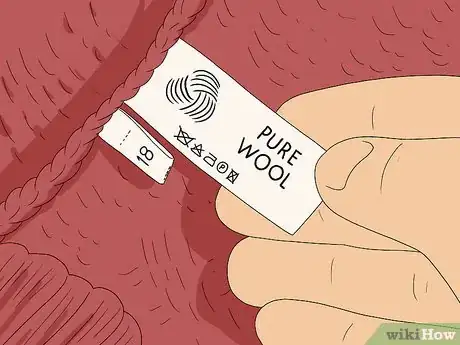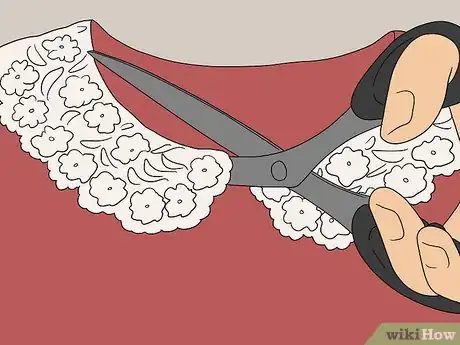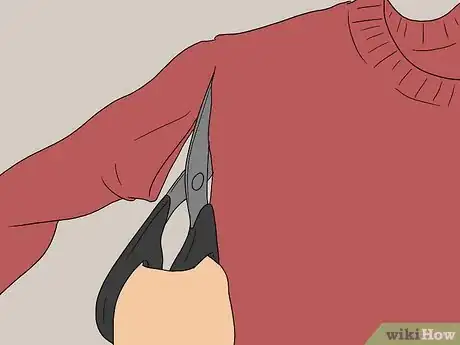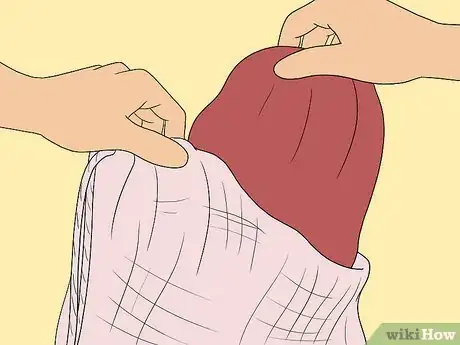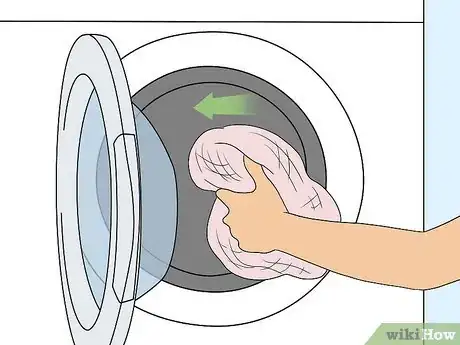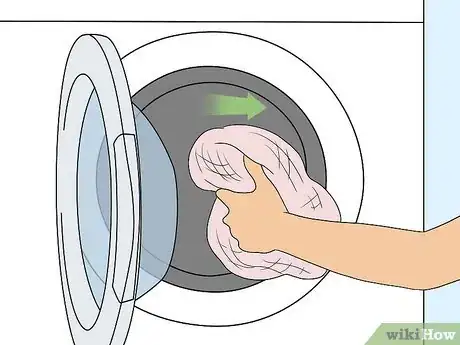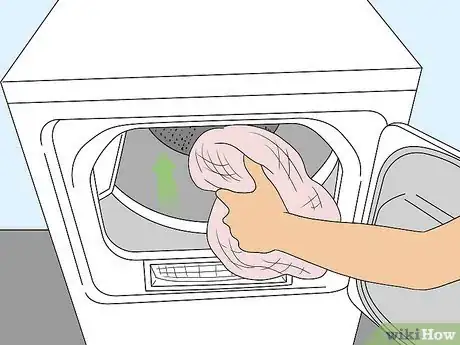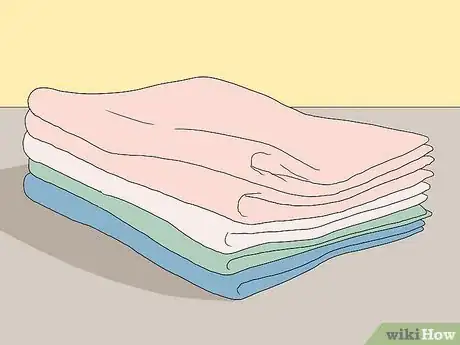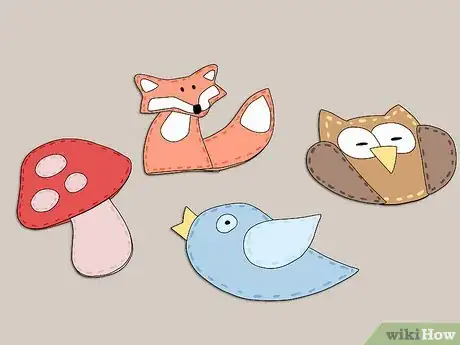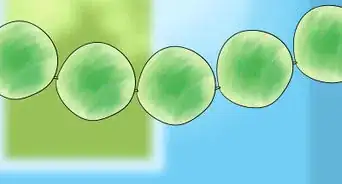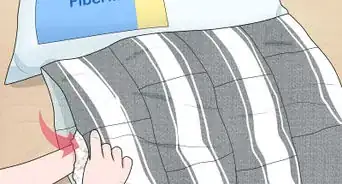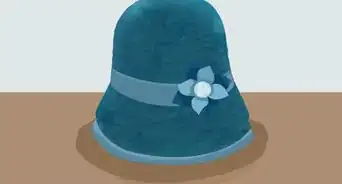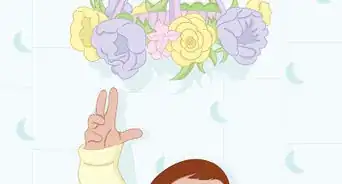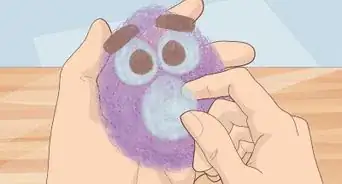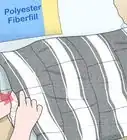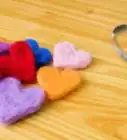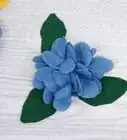X
wikiHow is a “wiki,” similar to Wikipedia, which means that many of our articles are co-written by multiple authors. To create this article, 9 people, some anonymous, worked to edit and improve it over time.
This article has been viewed 59,477 times.
Learn more...
Felting old sweaters is a great way to give old clothing a new lease on life; plus, you save money on getting a whole lot of good quality felt. Felting is the process of "boiling" the wool or other animal fiber until it matts or clumps together and turns into old-fashioned felt. Thanks to the ease of adding hot water to your washing machine and the drying power of your dryer, it's a really easy way to produce felt and get crafty.
Steps
Part 1
Part 1 of 3:
Selecting the sweater
-
1Choose an old sweater that you know you no longer wish to use for wearing. Be sure that it's not going to be a disappointment for anyone else in the family too, because once this sweater is transformed, there's no going back!
- Don't have any old sweaters? Check the thrift store, your neighbor's yard sale or online auctions for suitable finds.
-
2Choose sweaters made only of pure animal fibers. Since only animal fibers will felt, you'll need to check the label for the content of the sweater. Wool is the most used fiber for felting but you could also use a sweater made from cashmere, alpaca, camel hair or angora with wool (the angora cannot be used by itself, or it just doesn't turn into felt). Synthetic and plant-based sweaters do not felt; however, it is possible that a sweater with a very high level of animal fiber and a little synthetic may felt, provided the animal fiber forms at least 70 to 80 percent of the sweater.
- As well as what the sweater is made of, the general rule is that the heavier the sweater, the heavier the felt resulting from it. Hence, for a heavy-weight project, a sweater made from heavy wool yarn would work well, while for a lighter-weight project, use lighter wool yarn, or alpaca or cashmere.
Advertisement
Part 2
Part 2 of 3:
Felting the sweater
-
1Remove any parts of the sweater that are not to be felted. For example, remove lace collars or sleeve ends, buttons, sequins or pearls, etc.
-
2Cut the sweater into large pieces. This will make it easier to deal with once felted.
- Separate the sleeves, front and back.
-
3Place the pieces inside a mesh laundry bag that closes firmly or a pillowcase tied with a firm knot. This protects your washing machine from clogging up with excess fuzz caused by the felting process.
-
4Place the bag of sweater pieces into the washing machine. Add laundry soap and put it through a hot cycle. Finish with a cold cycle rinse; this is an important part of the felting process.
- Use a setting on the machine that allows for a good wash without there being too much water. Part of the success of felting relies on agitation or friction on the woolen object, so it shouldn't be swamped by water. So basically––a low water level plus high agitation.
- Sometimes it is good to include clothing that enjoys a hot cycle wash, to act as weights on the sweater pieces and help them to shrink and felt up––think jeans and towels.
-
5Remove the bag from the washing machine when the cycle has finished. Remove the pieces from the bag, being careful to toss away fuzz that no longer forms part of the sweater pieces.
- If you feel that the washing machine has adequately felted the sweater pieces, simply allow them to air dry on the clothes line without using the dryer.
-
6Throw the pieces into the dryer, if needed. Check that the lint trap is clean, as it is about to fill up again. Dry the sweater pieces on the hottest setting (high heat).
- The dryer step can help introduce "tightness" or "fullness" to the felt if it's looking a little shabby or loose after just the washing process.
-
7Remove from the dryer. You might have a whole lot of felt from the shrunken sweater pieces; success is determined by the pieces shrinking considerably and an inability to see the pattern or texture (threads) of the original sweater.
- If the sweater pieces have not shrunk or you can still discern the pattern or texture of the sweater, the pieces need to go through the whole process again, until felted properly. You can also snip a bit at the edges of the felt––if it frays, it needs to be put through the wash and dry cycles again; if not, it's felt.
- You may have to repeat the process several times with very heavy woolen sweaters, while a cashmere or alpaca might only take one wash and dry cycle. If it hasn't worked the first time and you didn't use a pair of jeans or a towel to add weight and something for the pieces to bump into, do so for the second wash.
-
8Store as for wool pieces in your craft materials. It is a good idea to store the pieces stacked, as this prevents the formation of wrinkles.
Advertisement
Community Q&A
-
QuestionHow do I wash medieval clothes used for reenacting?
 Community AnswerWhy not wash the clothes by hand, the same way they would have washed them then? If it's wool you're worried about, you can also have it dry cleaned.
Community AnswerWhy not wash the clothes by hand, the same way they would have washed them then? If it's wool you're worried about, you can also have it dry cleaned.
Advertisement
Things You'll Need
- Old sweater(s)
- Washing machine
- Dryer (optional)
- Laundry soap or soap shavings
- Mesh laundry bag or pillowcase
- Storage container or space
References
- http://www.bellaonline.com/articles/art34743.asp - Research source
- http://www.motherearthnews.com/diy/how-to-felt-wool-ze0z10zhir.aspx#axzz3ElGqwdYX – Research source
- http://www.auntpeaches.com/2010/11/friday-flowers-making-sweater-felt-in.html – Research source
About This Article
Advertisement
